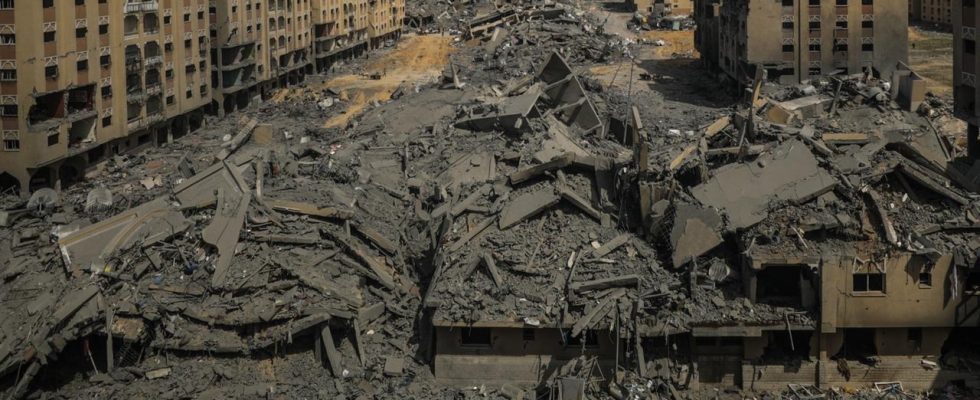The Israeli army says it has withdrawn most of its troops from the city of Khan Yunis in the south of the Gaza Strip. According to Defense Minister Gallant, this is part of a regrouping – also to be able to attack the city of Rafah.
After months of bitter fighting against the terrorist organization Hamas, Israel has withdrawn most of its soldiers from the southern Gaza Strip. The Israeli army’s 98th Commando Division “completed its deployment in Khan Yunis on April 7” and left the Gaza Strip “to recover and prepare for future operations,” an army official said.
The 98th Division “smashed the Hamas brigades in Khan Yunis and killed thousands of its members,” an army representative said, justifying the move, according to a report in the Haaretz newspaper. The troops there “did everything we could.” Palestinians who fled the fighting in Rafah could now return to Khan Yunis.
Preparation for Rafah offensive?
However, significant troops remain in the Gaza Strip “and will preserve the Israeli army’s freedom of action and its ability to carry out precise operations based on intelligence,” it said. The withdrawal involves three brigades; one brigade should remain in the coastal strip. A brigade consists of several thousand soldiers.
Israel’s Defense Minister Yoav Gallant, however, countered speculation in the Israeli media that evening that the withdrawal would also mean the end of the Israeli offensive. Rather, it is a regrouping in preparation for future operations: “The troops are leaving the Gaza Strip and preparing for their next operations. We have seen examples of such operations in the Shifa operation and also for their upcoming deployment in the Rafah area “says Gallant, according to his office.
The USA, among others, had previously stated that the withdrawal was probably not a maneuver in preparation for the ground offensive on Rafah. The reduction in troop numbers appears to be aimed at resting and regrouping the soldiers, says John Kirby, spokesman for national security in the US government, to ABC News.
Response to Hamas attack
The militant Islamist Hamas triggered the war on October 7th with its brutal attack on Israel. Fighters from the terrorist organization and other militant Palestinian groups entered Israeli towns and carried out massacres of civilians. According to Israeli reports, they killed around 1,160 people. Almost 250 people were also kidnapped as hostages in the Gaza Strip. About 130 of them are still being held and more than 30 are presumed dead.
In response to the attack, Israel launched a massive military operation in the Gaza Strip, initially primarily in the north of the Palestinian territory, then in the city of Khan Yunis, which is considered a Hamas stronghold. According to the military, Israel has attacked around 32,000 targets in the Gaza Strip since the war began, including more than 3,600 that were discovered to be Hamas sites during the fighting. According to Hamas’ latest figures, which cannot be independently verified, more than 33,100 people were killed.
War goals still unachieved
According to Israel, the declared goals of the Gaza war are the destruction of Hamas’ leadership and military capabilities and the release of the hostages. Israeli Prime Minister Benjamin Netanyahu repeatedly promised complete victory over Hamas. However, these goals have not yet been met.
Despite massive international warnings, Israel is planning a military operation in the city of Rafah on the border with Egypt, where more than a million refugees are crowding. Israel wants to destroy the last Hamas battalions there in order to prevent the terrorist organization from resurgent after the war.
Among other things, Hamas fights against the Israeli army from an extensive tunnel system hundreds of kilometers long under the Gaza Strip. So far it has not been possible to capture the Hamas leadership – headed by Jihia al-Sinwar – who is believed to be in tunnels in the south of the Gaza Strip. The assumption is that Sinwar has surrounded himself with hostages for his own protection and an operation against him would therefore be extremely risky.

